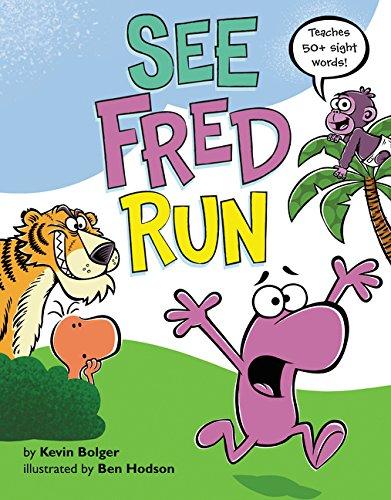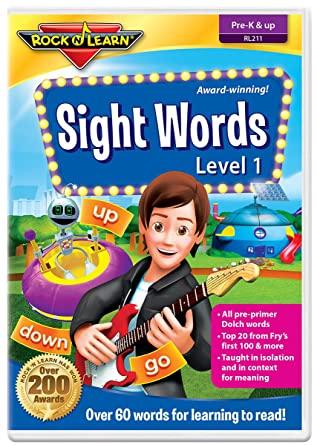The first time I had a parent come in asking about books with sight words, I probably looked at them like they were an alien. This was at my former library, and though I had worked in the children's department for some time, no one had ever asked me about them before. It had never come up in workshops/trainings/webinars, so I had to run to the computer to do a quick search. Maybe you're in the same boat as I was. If you have a kid that's approaching the age for pre-k or kindergarten and you have never heard about sight words, allow me to enlighten you!
Soooo what are sight words? These are lists of the most commonly used words used in writing, which children are expected to see and recognize within 3 seconds. Rather than sounding it out or decoding the word, the child should be able to see it and know what it is/how to pronounce it instantly. The list you'll be most likely to run across is the Dolch sight word list. This list is broken down by grade level. Odds are, your child will be expected to have proficiency with the words associated with their grade level (at least by the time they're ready to move to the next grade). The other list is the Fry list, which breaks the words down into groups of 100 by frequency. So the first set is a list of the 100 most commonly used words in the English language. However, for your ease and so we're not getting confused, I'll be referring to the Dolch list for any examples I give.
But why do they need to know these? Well, a lot of the words on the list can't really be sounded out. Take for example "to", "two" (both pre-k list), and "too" (kindergarten). We know they are homophones - that they all sound alike - but if you tried to sound out "to" or "two", I doubt you would come up with the "ooh" sound. That's the way it is for a lot of the words on the list. Another example from the kindergarten list is "what", "white", and "who". For two of those words, the wh- sounds like just a w-. For the other word in the set, it sounds like h-. If you look at second grade, the words "around" and "would" are both on the list. The ou- in the middle of those words sound very different from each other - one is "ow" and one is like "uh" (I'm not great at writing out phonetically -but you see what I mean). In these cases, it's easier for the child to memorize the word than to puzzle out what the pronunciation should be.
So should I do flash cards or something with my kid? You can. If that's something you want to do with your child, go for it! There are lots of resources online to help you print them out. If you don't want to drill them on words quite yet, take a good look at the sight words for their level. At least familiarize yourself with the ones you're likely to see often - for example pre-k has the words "a", "and", "in", "is", "it", and "the" (among others). When you're reading books to your children - always point those words out on the page. Get them to repeat it. After a while, you can try to pause when you get to those words and ask your child what the word is.
While regular books are fine for that exercise, if you want something a bit more focused, we do have sight words books in our collection. Below is a list of some materials we have available for checkout.

Bob Books - they have sight word collections for kindergarten, first, and second grade.
Fancy Nany's Fantastic Phonics by Jane O'Connor - only the first book in this set goes over sight words. The rest focus on phonics.
Fun with Ed and Fred and See Fred Run by Kevin Bolger - the cover of these books says it teaches "50+ sight words". Which 50? No idea. Based on the words on the cover though, I'm assuming this is the pre-k set.
Pinkalicious Phonics Box by Victoria Kann - as with Fancy Nancy, the first book in this set is the only one that focuses on sight words.
Sight Word Readers - these have been split into two sets. The top corner of each little book tells you what sight words are featured. It's supposed to be "first 50 sight words", so this is intended for pre-k/kindergarten.

Common Core - Sight Words - these DVDs cover sight word lists for grades K-2.
Meet the Sight Words - these are part of a larger video series called Preschool Prep - which also has videos on colors, numbers, the alphabet, etc. Since it's a preschool series, these videos are focusing on the sight words for pre-k.
Rock 'n Learn - Sight Words - this is a 3 volume set. The first focuses on pre-k, the second on kindergarten, and the third on 1st grade.
Originally Posted by StephanieT on August 11, 2020